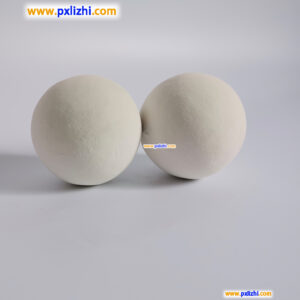
。
# Inert Ceramic Ball Applications in Industrial Processes
## Introduction to Inert Ceramic Balls
Inert ceramic balls are widely used in various industrial processes due to their excellent chemical stability, high mechanical strength, and thermal resistance. These small spherical ceramic pieces play a crucial role in supporting catalysts, distributing gases and liquids, and protecting sensitive equipment in harsh industrial environments.
## Key Properties of Inert Ceramic Balls
The effectiveness of inert ceramic balls in industrial applications stems from their unique properties:
– High temperature resistance (up to 1600°C)
– Excellent chemical inertness
– Superior mechanical strength
– Low water absorption
– Resistance to thermal shock
– Uniform size and shape
## Major Industrial Applications
### 1. Petrochemical Industry
Keyword: inert ceramic ball
In the petrochemical sector, inert ceramic balls serve multiple purposes:
– Catalyst support in reactors
– Bed support in packed columns
– Gas distribution media
– Protection of sensitive equipment from direct heat
### 2. Environmental Protection
Ceramic balls contribute to environmental applications:
– Support media in scrubbers for gas purification
– Packing material in wastewater treatment towers
– Filtration media for industrial emissions
### 3. Chemical Processing
Chemical manufacturers utilize ceramic balls for:
– Distillation column packing
– Reactor internals
– Acid-resistant tower packing
– Protection of catalyst beds
### 4. Power Generation
Power plants employ ceramic balls in:
– Flue gas desulfurization systems
– Heat recovery units
– Boiler feedwater treatment
– Emission control systems
## Advantages Over Alternative Materials
Inert ceramic balls offer several benefits compared to other packing materials:
– Longer service life than metal or plastic alternatives
– Better resistance to corrosive environments
– Higher temperature tolerance
– Lower maintenance requirements
– More consistent performance over time
## Selection Considerations
When choosing inert ceramic balls for industrial applications, consider:
– Operating temperature range
– Chemical exposure
– Mechanical load requirements
– Flow characteristics
– Pressure drop considerations
– Size and shape specifications
## Future Trends
The demand for inert ceramic balls continues to grow as industries seek more efficient and durable solutions. Emerging applications include:
– Advanced catalytic processes
– Green chemistry applications
– High-temperature energy storage
– Next-generation pollution control systems
As industrial processes become more demanding, the role of inert ceramic balls as reliable, high-performance components will only increase in importance.